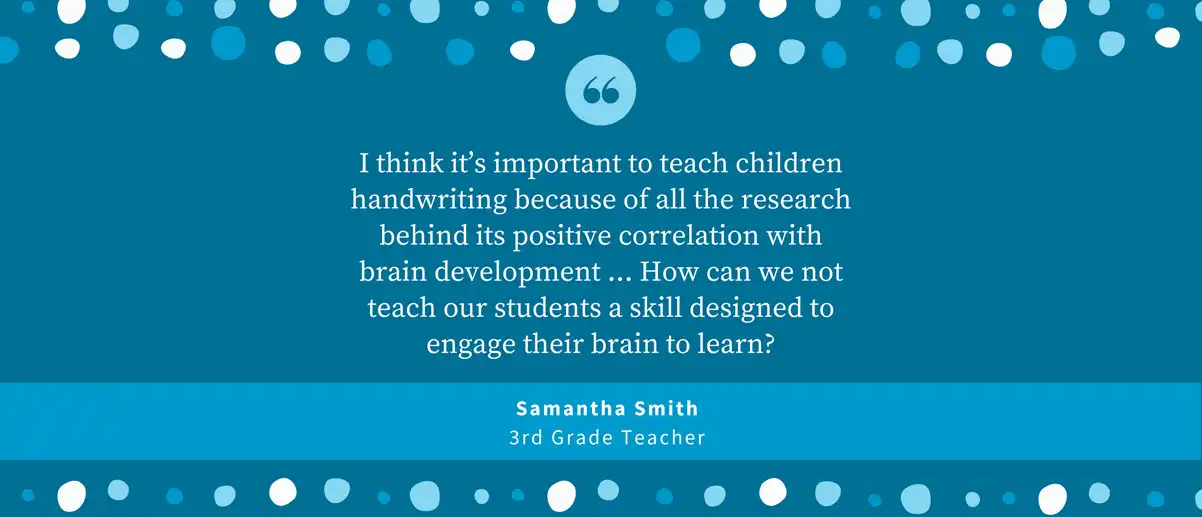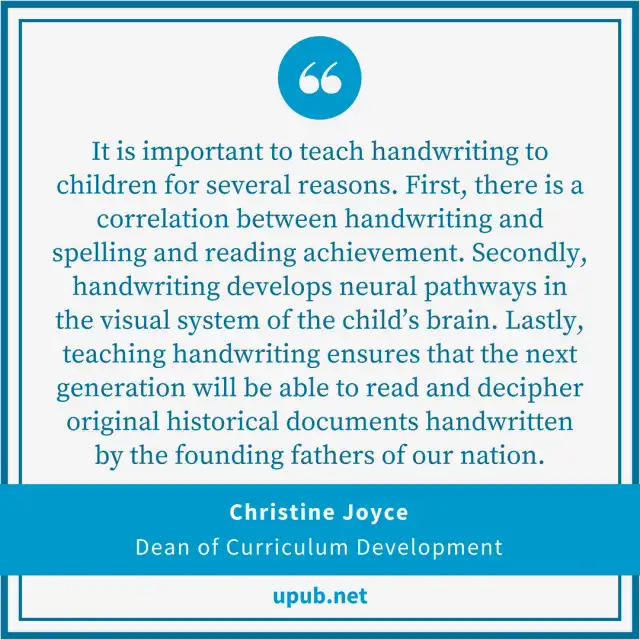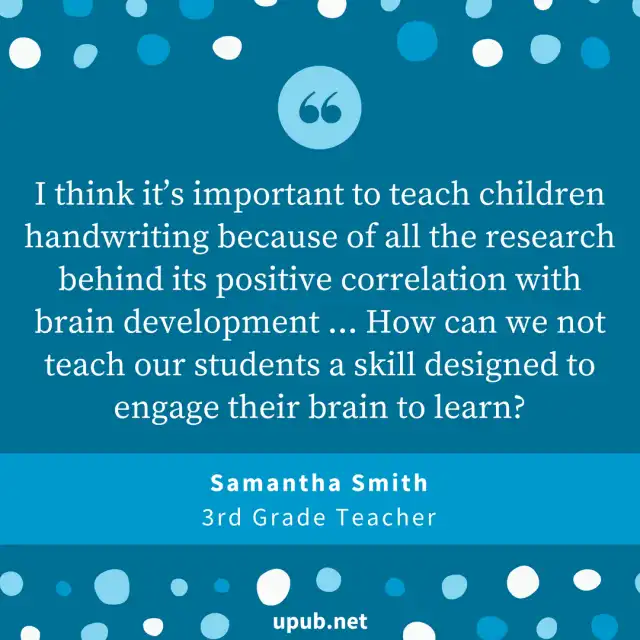
Teacher Contest Winners Share Why It’s Important to Teach Handwriting
This year, we introduced a new Teacher Division in our annual handwriting contest to allow teachers to show off their handwriting. Teachers were asked to submit samples of both manuscript and cursive handwriting and to also answer the question, “Why do you think it’s important to teach handwriting?”
For the contest, teachers were only judged on the quality of their handwriting, not how they answered this question. However, we loved some of the responses so much we wanted to share them!
Why Is It Important to Teach Handwriting?
Below are the responses of the teachers who placed or received an honorable mention in the Teacher Division.
Tama Kain, who teaches grades 7 and 8 at St. Patrick School in McCook, Nebraska, was our first-place Teacher Division winner. For her entry, she shared several advantages of having good penmanship.
Mrs. Kain wrote, “Neat, legible handwriting suggests a creative mind, determination for excellence, strong work ethic, and academic success – distinctive attributes which help secure a prospective vocation and ensure a promising future. Refined penmanship gives students a head start in a competitive world.”

Maria Kennedy, a second-grade teacher at The Atonement Academy in San Antonio, Texas, won second place. Mrs. Kennedy’s school places particular importance on handwriting instruction, a fact reflected by the many students from The Atonement Academy who claimed awards in this year’s contest.
Mrs. Kennedy explains the reason for the school’s emphasis on handwriting in her entry response: “Formal handwriting instruction is an essential component of a child’s early education. Research over the years has proven that writing by hand engages the brain in learning and reinforces reading and writing development.”

Our third-place Teacher Division winner was Christine Joyce of Padre Pio Academy in Lakewood, Ohio. She cited research that shows the link between writing by hand and learning. Mrs. Joyce also pointed out that teaching students cursive will allow them to read important historical documents.
Mrs. Joyce responded, “It is important to teach handwriting to children for several reasons. First, there is a correlation between handwriting and spelling and reading achievement. Secondly, handwriting develops neural pathways in the visual system of the child’s brain. Lastly, teaching handwriting ensures that the next generation will be able to read and decipher original historical documents handwritten by the founding fathers of our nation.”

Samantha Smith of The Greene School in West Palm Beach, Florida, received an honorable mention. She also spoke of the abundant research that shows the academic benefits of handwriting.
Miss Smith’s response was, “I think it’s important to teach children handwriting because of all the research behind its positive correlation with brain development. Studies have revealed the relationship between quality handwriting and the density of brain cells. Cursive has even become a therapy tool to strengthen motor control for people with dyslexia and dysgraphia. How can we not teach our students a skill designed to engage their brain to learn?”

Kristen O’Brien of St. Mary’s Elementary School in Asbury, Missouri also received an honorable mention. On her entry, she pointed out that handwriting helps build fine-motor skills and that learning cursive allows us to read historical documents and family keepsakes from generations past.
Mrs. O’Brien wrote, “Children need to be taught handwriting for two important reasons. I have seen a major decline in fine motor skills since I began teaching. Handwriting helps to improve these fine motor skills. Also, students must learn cursive so that they are able to read historical documents and the love letters their great-grandparents wrote to one another!”

We’d love to hear why you think teaching handwriting is important. Share your comments with us below!



